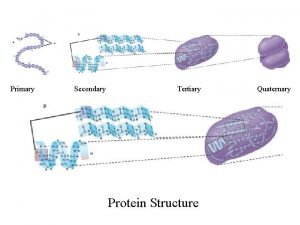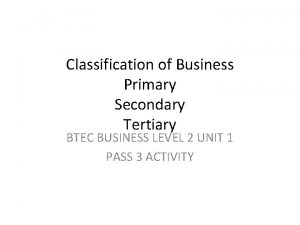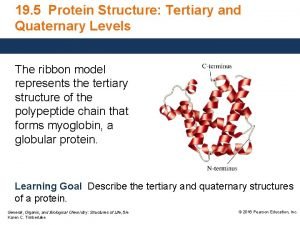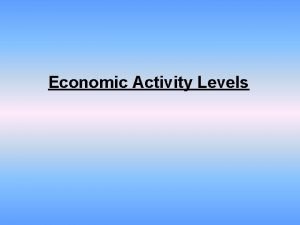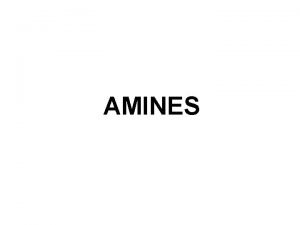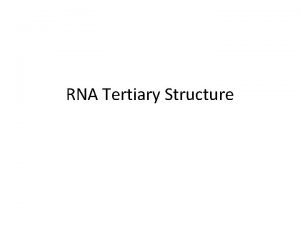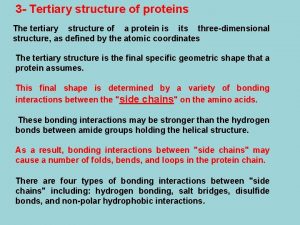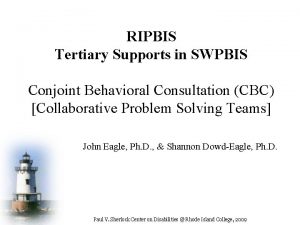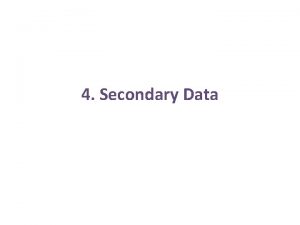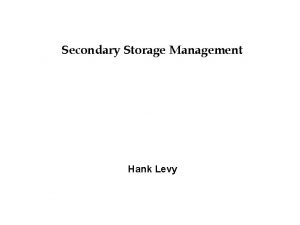Implementing Secondary and Tertiary Supports Progress and Lessons






































- Slides: 38

Implementing Secondary and Tertiary Supports: Progress and Lessons Annie Mc. Laughlin, M. T. Veronica Pamparo, M. Ed. Carol Davis, Ed. D. University of Washington anniemcl@u. washington. edu vpamparo@u. washington. edu cadavis 1@u. washington. edu

Today’s Agenda Overview of the process that the project model schools currently use n Case study and other examples of the implementation of the project n Questions and discussion n

What do we know? n Challenging behavior in the classroom are the most requested issues for consultation n Consultation or out of district placements can account for up to one-third of a districts special education budget n Consultation does not provide a long term solution to dealing with challenging behavior in the schools n Challenging behavior puts students at an increased risk for exclusion

What is SWPBS? Academic Systems Intensive, Individual Interventions • Individual Students • Assessment-based • High Intensity Targeted Group Interventions • Some students (at-risk) • High efficiency • Rapid response Behavioral Systems 1 -5% 5 -10% Universal Interventions • All students • Preventive, proactive 80 -90% Intensive, Individual Interventions • Individual Students • Assessment-based • Intense, durable procedures Targeted Group Interventions • Some students (at-risk) • High efficiency • Rapid response Universal Interventions • All settings, all students • Preventive, proactive

What are the challenges to providing PBS for ALL students? n Building capacity must be a district initiative. n The spectrum of social behavior across students is extremely wide. n The depth of knowledge of challenging behavior has to be extensive. n Teachers are unfamiliar with the notion of functionbased behavior plans. n Collaboration and/or role release between staff members is challenging. n Budgets are tight.

What are assumptions on which the model is based? 1. Schools must meet the differing needs of ALL children. 2. Within district expertise should be developed. 3. Administration plays an active LEADERSHIP role. 4. Behavior plans must be evidence-based. 5. Schools must be willing to consider alternatives to suspension and alternative placements 6. Ongoing data collection and review are necessary

Scaling the Pyramid Develop within school district teams with expertise in tertiary levels of PBS to provide assessment, intervention, and progress monitoring support for students with the most challenging behavior. Provide ongoing professional development that builds capacity within the school and district.

Schoolwide. Team 1 mtg/qtr 3 – 4 people § Evaluating Environments and Office Referrals § Supporting Safe and Civil Schools § Making changes Implementing in School Buildings Triage Team 1 mtg/week 2 – 3 people Targeted interventions Academic Small group Behavioral CICO Social Skills Support Team 1 mtg/week 3 -4 people Individualized Interventions

Technical Assistance Teams Provide technical assistance In school awareness training Provision of additional resources schoolwide Ongoing training for team Take referral from school team member Conduct an FBA Brainstorm potential behavior plan solutions Assist in the implementation Use data to adjust plan

Technical Assistance Teams A team used to: n n Provide suggestions for curriculum modifications and accessing the general education curriculum Provide ongoing support and expertise in the areas of Functional Assessment and Behavior Planning Provide support for data collection Provide ongoing monitoring of program implementation and student progress

Who is on the Technical Assistance Teams? School district employees n Multi-disciplinary team members n – SPED/GENED teachers – ELL/Reading/Math facilitators – School psychologists – Social worker – School counselor – Administrator Chosen with school administrator input n Participation is voluntary n

Team member characteristics: n Strong in his/her area of expertise. n Uses data to make decisions in own practice n Uses behavioral principles in own practices n Believes in the benefits of PBS n n Are respected members of their professional discipline Have experience as both leaders and participants in the educational process

What does participating as a team member mean? Records review n Observations n Functional Assessment n Behavior Planning n Making materials n Coaching during initial implementation n Conducting person centered plans n

TAT Training n Long term (one year) training is provided to the team members across a year – A project staff member (either hired within the district or from the University) provides approximately 10 -15 hours a week with the TAT members – Teams also attend yearly trainings and have access to current research – Teams meet weekly along with project staff

Secondary interventions Must be continuously available n Rapid (72 hr) access n Low effort by teachers n Function based interventions n Continuous data monitoring for data based decisions n

How does a student access secondary services? A student who receives more than 3 office referrals in one month n A referral from any staff member n

Secondary intervention examples Social skills training n Academic support n Check-In/Check-Out n Family support n

When secondary interventions are not enough n Student’s data and information moves to the tertiary technical assistance team

Technical Assistance Team Case Management n Each team of 4 will manage up to 12 students n Each student is observed approximately 2 hours every other week n Meetings with teachers and other service providers occur at least twice monthly n Each student is discussed at least 2 x a month at team meetings

Technical Assistance Team Meetings n Issues are identified and prioritized by the teacher or the TAT member to be discussed at the team meetings. n The TAT members meet 1 X a week to discuss students. n The expertise of each of the members is used in the solution of the problem through the examination of data and brainstorming.

What happens when a student is referred to the TAT? n n n The TAT member observes in the classroom for primary and secondary strategies The need for more intensive intervention is determined by the school team The TAT member conducts classroom observations resulting in an FBA The TAT (at weekly meetings) brainstorms options for intervention plans Student is monitored

What are tertiary supports? n n n Antecedent Interventions – Pre-specify the reinforcer – Providing choices – Instructional modifications – High-Probability Requests Teaching strategies – Social skills – Functional Communication Training Consequent Strategies – Reinforcement systems

What is the impact of this project on the tertiary supports provided in a school? n Teacher/Classrooms – STP Student Assessment – CARS Classroom Atmosphere Rating Scale n Students – – n Curriculum Based Measures Office Discipline Referrals Engagement, task completion Specific data based on behavior plan Team – Pre-post on behavior plans

EXAMPLES: CASE STUDIES

Tucker 5 th grade student who loves to read, play on the playground, and play video games at home n Attends all general education classes n Qualifies under Emotional/Behavior Disorder and was qualified in the 5 th grade n

Initial Steps: Referral to secondary team Referral form n Initial Classroom Observation n # of Office Discipline Referrals: 3/wk n # of SWPBS tickets received: 0 n

Initial team meeting The information was brought the team meeting. n Brief FBA conducted: Entered Check. In/Check-Out program n


More information While Tucker is making progress in Check-In/Check-Out, he continued to have 3 office referrals per week n Team decided to refer him to the tertiary team. n – Tertiary team decided to conduct a full FBA

Follow-up team meeting FAI FBA • With teacher • With parent • With student Scatterplo t ABC • For 4 school days • By classroom teacher • Observed target behavior 20 times • By team member

FBA Hypothesis Direct Observations Interviews Previous data collection Given written work, Tucker will refuse by putting his head down, kick and/or screaming in order to avoid his work.

Behavior Intervention Plan Antecedent Teaching Consequence • Reduce # of math problems on independent math assignments • Pre-specify reinforcer (points) before handing math work • Used sticky notes to deliver instruction for written work • Requesting to take a break from work • Ask for help from peer tutor during work times • With completion of math assignments, earns points. • Safety plan developed for possible escalations.

Follow-up

Follow-up meeting: 2 weeks later Teacher perception of intervention success Data collection from observation Curriculum based measures for academics Continue plan as designed Next check-in: 4 weeks

What have we learned? n Administrative support at the district level and at the school level is necessary (i. e. resources, FTE, funding). n TAT members must meet criteria. n Schools need to be implementing Schoolwide Positive Behavior Support. n Schools need to be using or be willing to use data and progress monitoring tools.

What have we learned? (Cont) n n n TAT members increase their efforts when they perceive their contributions to be unique and important to the team/child. TAT members are more effective when they have the support of administration and colleagues to change programs based on data. TAT members remark that the on-going (initial support from project staff) training component assists in developing more confident TAT members.

What have we learned? (Cont) n Team members with less than 1. 0 FTE have flexible schedules that support collaboration. n Model must be flexible. n Pay attention to your consumers including school personnel, parents, and students.

Questions? Website: http: //depts. washington. edu/stppbs Feel free to contact us: Annie Mc. Laughlin at anniemcl@u. washington. edu, Veronica Pamparo at vpamparo@u. washington. edu Carol Davis at cadavis 1@u. washington. edu
 Physical progress and financial progress
Physical progress and financial progress Difference between primary secondary and tertiary alcohols
Difference between primary secondary and tertiary alcohols Primary secondary tertiary
Primary secondary tertiary Primary secondary tertiary quaternary structure
Primary secondary tertiary quaternary structure Primary secondary tertiary health care definition
Primary secondary tertiary health care definition Interpreting food webs worksheet
Interpreting food webs worksheet What is secondary processing
What is secondary processing Primary secondary and tertiary sector
Primary secondary and tertiary sector Secondary economic activities definition
Secondary economic activities definition Primary secondary and tertiary sector
Primary secondary and tertiary sector Sewage treatment primary secondary and tertiary
Sewage treatment primary secondary and tertiary Primary secondary and tertiary protein structure
Primary secondary and tertiary protein structure Primary bronchi
Primary bronchi Primary secondary and tertiary bronchi
Primary secondary and tertiary bronchi Lungcome
Lungcome Primary secondary tertiary industries
Primary secondary tertiary industries Primary secondary and tertiary industries in belize
Primary secondary and tertiary industries in belize Primary secondary and tertiary structure of protein
Primary secondary and tertiary structure of protein Wastewater treatment process primary secondary tertiary
Wastewater treatment process primary secondary tertiary Primary secondary tertiary colors
Primary secondary tertiary colors Primary secondary tertiary aphg
Primary secondary tertiary aphg Education level primary secondary tertiary malaysia
Education level primary secondary tertiary malaysia Levels of economic activities
Levels of economic activities Cis-1-tert-butyl-3-methylcyclohexane
Cis-1-tert-butyl-3-methylcyclohexane Primary vs secondary vs tertiary vs quaternary structures
Primary vs secondary vs tertiary vs quaternary structures Secondary amine
Secondary amine Primary prevention secondary prevention tertiary prevention
Primary prevention secondary prevention tertiary prevention Primary secondary tertiary
Primary secondary tertiary Implementing strategies management and operations issues
Implementing strategies management and operations issues Strategic management chapter 7
Strategic management chapter 7 Implementing strategies: management and operations issues
Implementing strategies: management and operations issues Tripod of pricing
Tripod of pricing Designing and implementing brand marketing programs
Designing and implementing brand marketing programs Designing and implementing brand marketing programs
Designing and implementing brand marketing programs Crm project plan
Crm project plan Strategic business unit structure
Strategic business unit structure Low end entry level brand
Low end entry level brand Implementing strategies management and operations issues
Implementing strategies management and operations issues Implementing hrd programs pdf
Implementing hrd programs pdf



